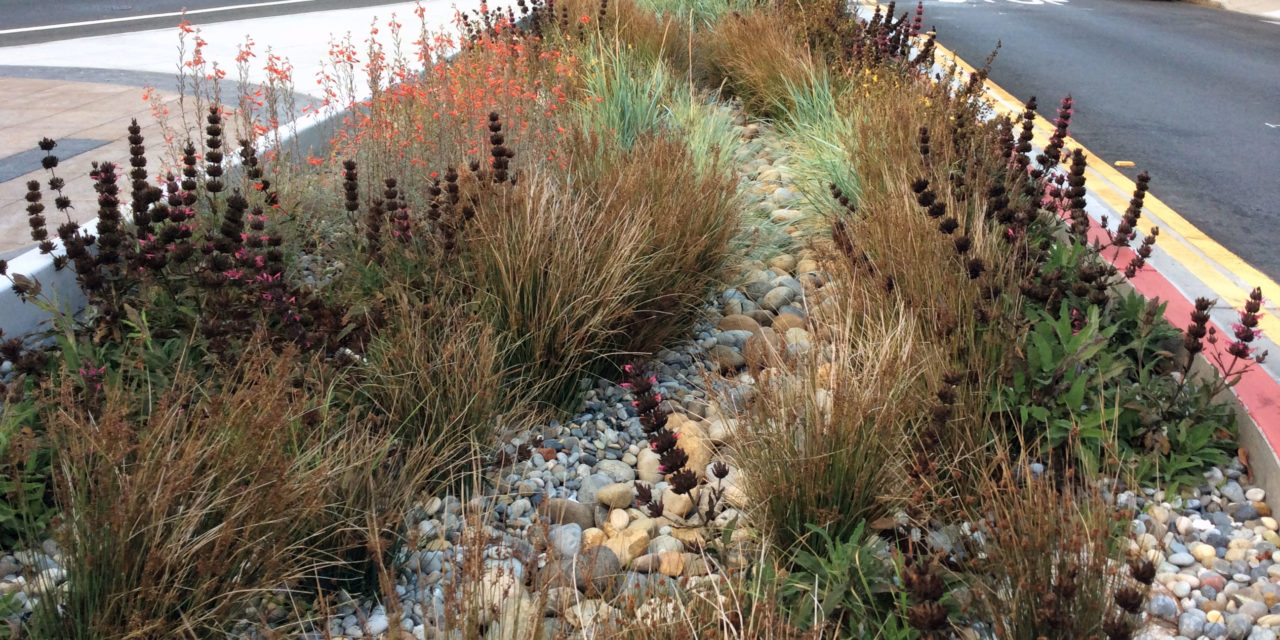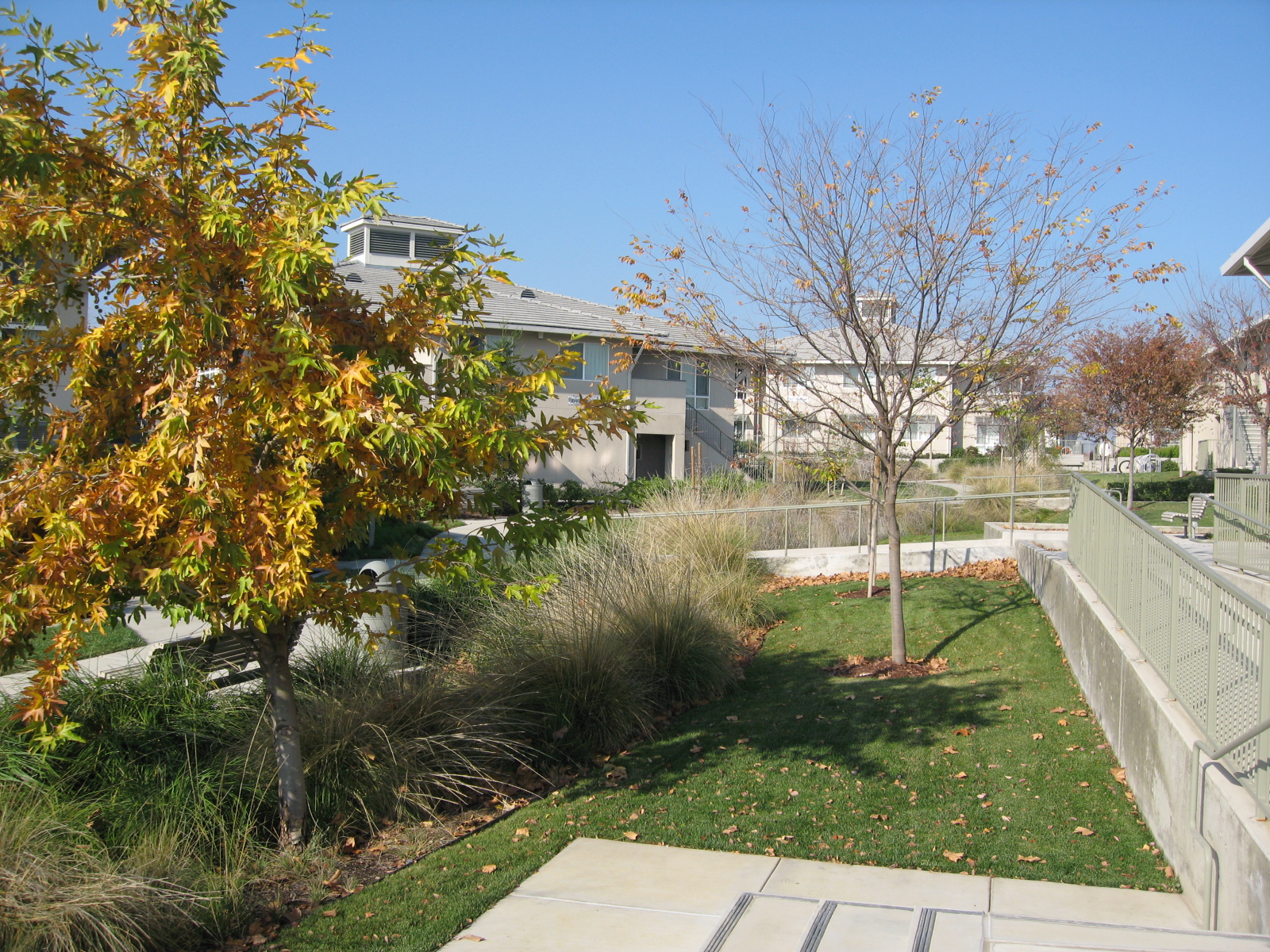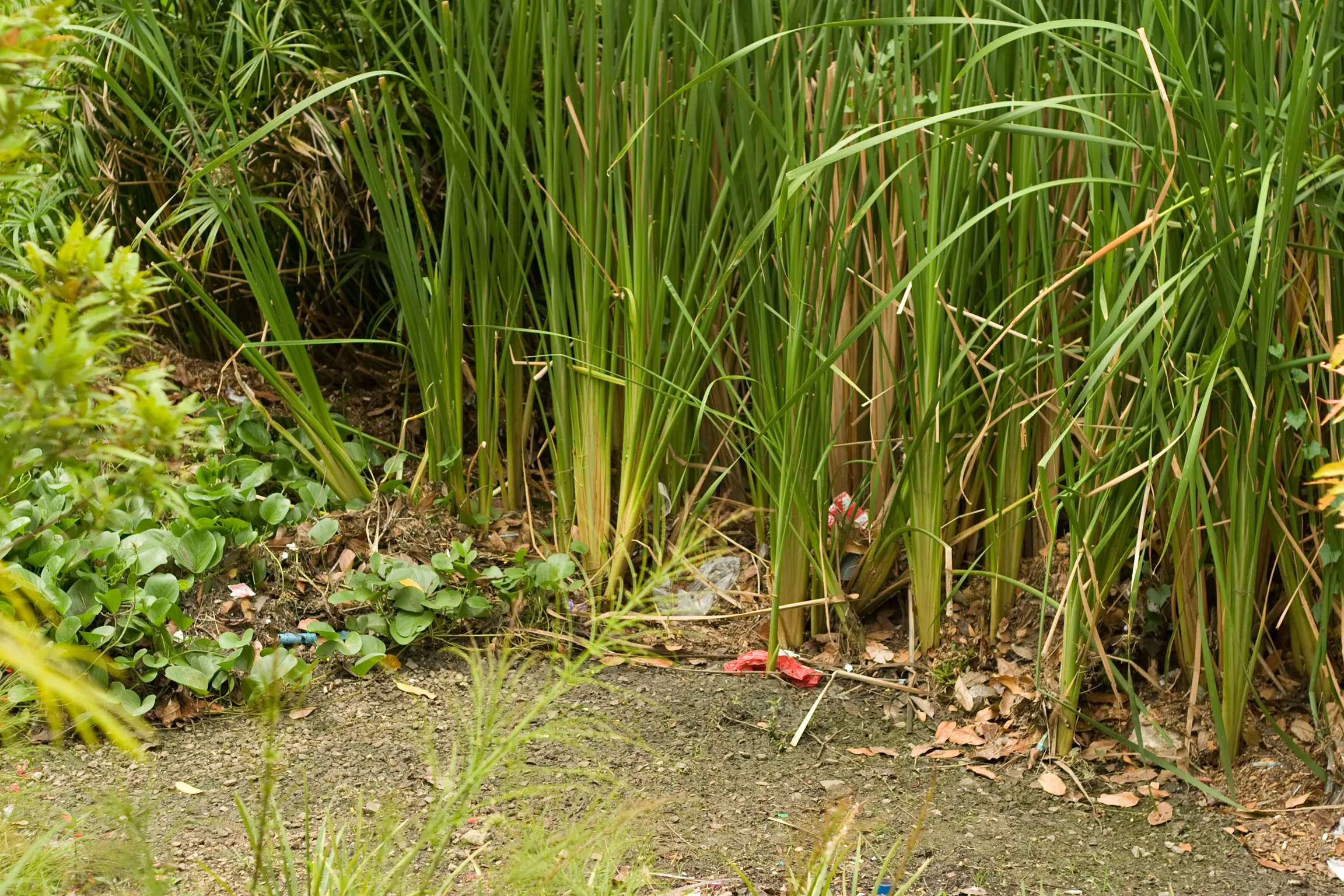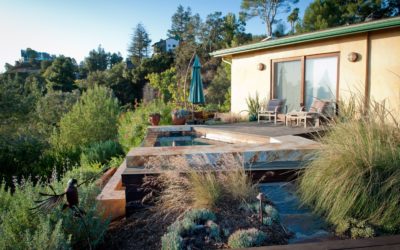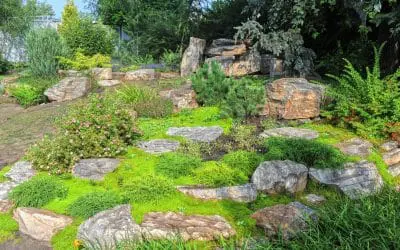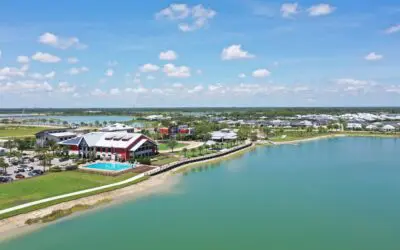Swales mimic nature’s effectiveness in capturing rainwater and controlling problems with runoff and pollution.
By Ben Rigby
Even a little rain can lead to big problems for property owners in locations with poorly designed drainage and lots of hardscapes like streets and parking lots. And in drought-prone areas, rain can fall hard and runoff quickly, wasting a precious resource. More and more, eco-conscious homeowners are exploring and implementing carefully designed swales in their landscaping. Swales use natural mechanisms to harvest rainwater, reduce pollution, and keep heavy runoff from damaging landscaping and structures.
What is a swale? Swales are subtle, constructed channels in landscaping that capture rainwater runoff and redirect it. By capturing rainwater rather than channeling it into open waterways, regions with drought-prone landscapes can benefit from swales. Swales can also be a vital tool in preventing pollutants like road oils, fertilizers, and excess sediment from flowing into local waterways. After all, our yards are still part of bigger watersheds that serve humans and the environment. Local runoff feeds into larger bodies of water, evaporates in heat, or percolates into the water table.
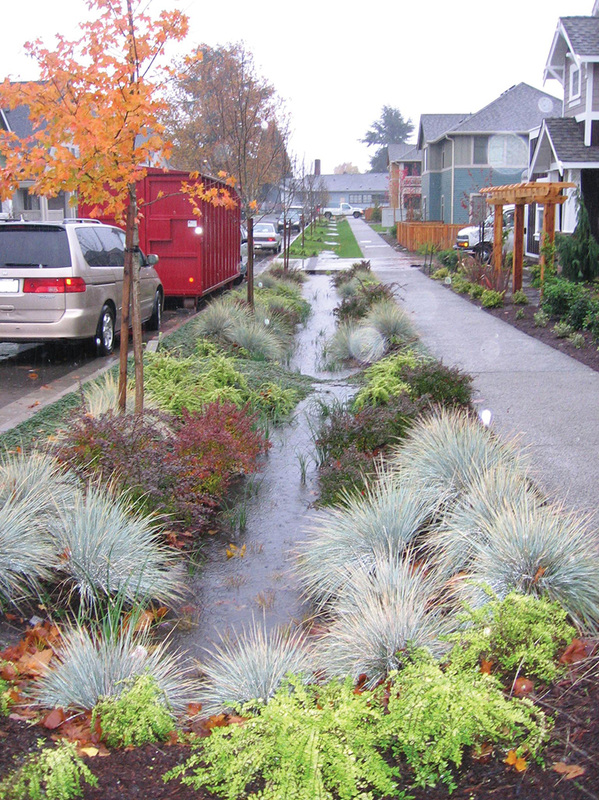
Drainage swales vs bioswales
Swales vary in shape, length, and cost. They are definitely not the same as drainage ditches, which are designed solely for conveying water. Drainage swale is a less-common term used for the most common, and least complex, type of swale: the grass swale. Other types of swales include bioswales and vegetated swales, which may feature greater plant biodiversity than drainage/grass swales.
Grass swales are earthen channels that use thick turf to “treat” stormwater through a variety of mechanisms. Vegetated swales have additional types of plantings, resulting in dense strands of vegetation that cover the sides and bottom. And where the water table is high or rain is frequent, a homeowner might till deeper and plant a more elaborate wet swale or lovely rain garden.
When runoff encounters vegetation, its speed and ability to erode are blunted. Excess sediment settles out, and runoff is generally cleaner and clearer where it flows out of the swale, making it much more beneficial to downstream ecosystems. During periods when the swale is not collecting runoff regularly, vegetation provides habitat for insects and lizards. Blooming flowers attract nectar-sipping birds and butterflies.
Where do swales matter?
In cities with a lot of impermeable roads, buildings, and parking lots, swales act as sponges that absorb surface runoff from rainstorms. They are becoming increasingly popular in dry climates where a shorter rainy season creates a narrow window for recharging groundwater with local rainfall. These climates generally experience shorter, but very intense periods of rainfall.
Such storms, especially in impervious cities, produce high peak flows that place stress on local natural and constructed waterways. Swales help soften these peak flows and their resulting damage. They allow the water to slow down and infiltrate into the ground.
By reducing runoff near its source and redirecting it, swales improve local groundwater supplies. In drought-prone areas they can ease reliance on imported water. For instance, Los Angeles’ low-impact development (LID) ordinance often requires swales in order to restore the natural hydrologic (water movement) conditions that existed prior to construction.
Swales can reduce flood damage
Because swales reduce the speed and volume of runoff, they can prevent destructive pooling and erosion that happens during floods. Rather than running straight into roads and impermeable surfaces, water can instead pool along the length of a swale and slowly sink into the land.
Adding swales in residential neighborhoods can result in beautiful, healthy yards that create habitat and save water – while protecting homes and expensive landscaping from flood damage. The Green Gardens Group (G3) provides landscaping guidelines and visual descriptions of how every piece of property functions like a miniature watershed, as described in Watershed Approaches to Landscaping. (Note that Los Angeles and many cities do employ acres-large detention basins that help capture and percolate runoff. But during larger rainstorms, these reach capacity.)
In general, swales capture and treat rainwater:
- enabling percolation into the soil
- decreasing flooding: peak flows, debris flows, and runoff speed
- facilitating pollutant capture
- helping to recharge the local water table
- adding beauty and habitat value to landscapes
Recessed Areas Slow and Infiltrate Water into Soil on Site photo by Lauren Jolly Roberts licensed under CC BY 2.0 Deed.
Requirements for landscaping
Perhaps the most important requirement for installing a swale on your property is to be sure the land is flat enough. An area with a slope of less than 5% is ideal. Steeper swales might be a pleasing landscape element, but they will not slow down the flow of water.
Whether hiring a contractor or not, it is important to research the rules for swales in your community, before transforming your yard or property. If you can, work with an agency or landscape architect that is familiar with the local requirements, constraints, and feasibility of incorporating swales into residential landscaping.
There is no “one-soil-fits-all” requirement when it comes to swales. However, swales on non-porous or high-clay soils will likely require you to replace the first few feet of soil with a more porous mix to prevent water from pooling for longer than a day. (No mosquitos, please.) This can increase the price of constructing your swale.
Rain Garden photo by Rogersoh licensed by CC-BY-SA 3.0 DEED.
You can choose more complex (and expensive) swale configurations utilizing gravel, pipes, French drains, or dams. But any swale should be thoughtfully tailored to your property to produce the specific benefits you desire. In high-volume, swift-runoff areas, a few well-placed, larger rocks can function as check dams that will reduce the speed of runoff. Whereas in low-volume areas or front yards, you might focus on deep-rooted, flowering vegetation.
When planting, absolutely consider native plants and grasses in your region and how they might respond to periodic flooding. In California, see Plants for Vegetative Swales from Stop Waste, a public agency based in Alameda County. In the upper Midwest, check out this guide; there’s another for New England.
In terms of maintenance, light ongoing care is needed for any swale, with occasional work to remove trash carried in during heavy rainfall. Vegetated swales will also require a bit of devotion to prune vegetation, add mulch, and remove excess sediment and weeds.
To Swale or Not to Swale?
Whether or not to add a swale largely depends on your location and any drainage problems. But in just about any neighborhood, vegetated swales provide a wealth of benefits that utilize natural mechanisms to conserve water and manage runoff, flooding, and pollution. Their ability to filter and break down pollutants in a natural and energy-free manner makes them an eco-friendly option.
As climate change produces increasingly erratic cycles of drought to deluge, maintaining the local water table and increasing flood resilience are critical, particularly in the West as imported water supplies become less reliable with reduced snowpack. By capturing the runoff from your rooftop, patio, and driveway, a vegetated swale can reduce the cost of watering your landscape and contribute to local groundwater. Swales can be easily constructed in many existing and new residential landscapes, so please consider your yard as integral to the local watershed.
Swales can be both attractive and utilitarian, providing individual and community-wide benefits. Increasing public awareness about swales and their prevalence—especially in drought-prone and other appropriate regions—shows that water conservation can be part of daily life. We are in need of an ideological shift in the American Dream: one that recognizes the value of a home and landscaping that captures, conserves, and celebrates water, rather than just consuming it.
The author:
Ben Rigby is currently finishing his Master of Landscape Architecture degree from UC Berkeley. At Pitzer College, he published his thesis on “Stormwater Capture in the Built Watershed: Fostering Public Awareness of Water Conservation Through a Parcel-level Approach to Stormwater Management.” Ben’s curiosity for landscapes is centered around their ability to elicit certain emotions that are unique to each user’s background, and he is especially interested in plant form and texture.

Learn more ways to make your landscaping eco-friendly:
Sustainable, Eco-Friendly Gift Guide
Give the Gift of Better Living with Elemental Green’s curated list of our favorite eco-friendly products to help jump start your healthier, more-sustainable gift search. We are continually updating this list with fresh products for everyone on your good list.
Can Fire Resistant Landscaping Save Your Home from Wildfire?
If you’re worried about the wildfire threat to your home, landscaping firm FormLA shows how beautiful fire resilience can be.
Smart Water Devices to Make Your Home Greener
With smart water devices, you can prevent in-home floods, reduce your water use, and save. A lot.
10 Easy, Low-Maintenance Lawn Alternatives
The developing water shortage crisis in the U.S. has prompted many homeowners to turn to eco-friendly and low-maintenance lawn alternatives. And there are plenty of options—everything from clover and moss to ornamental grasses and flower beds, all sharing eco-friendliness as a common denominator.
Toxic Chemicals Hiding in Your Home: What You Need to Know
We come in daily contact with many toxic chemicals, even inside our homes. But making informed decisions about home building materials can reduce our exposure.
Resilient Solar Town Rides Out 1-in-1,000–Year Hurricane
This resilient community thrives on 1500MW of solar power, its own water-treatment plant, and surrounding wetlands for natural beauty and stormwater management.


